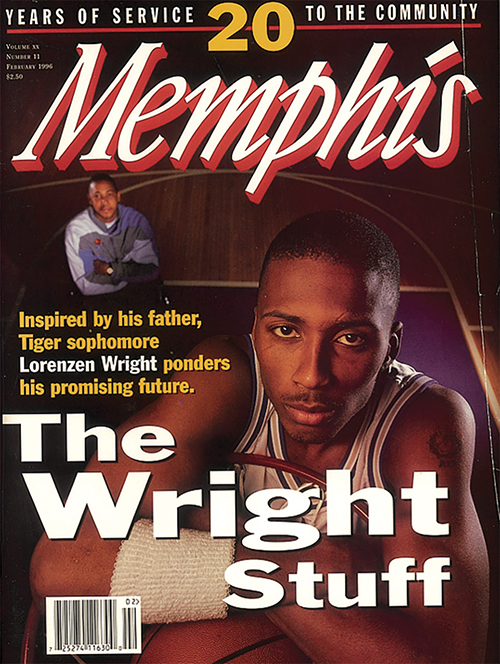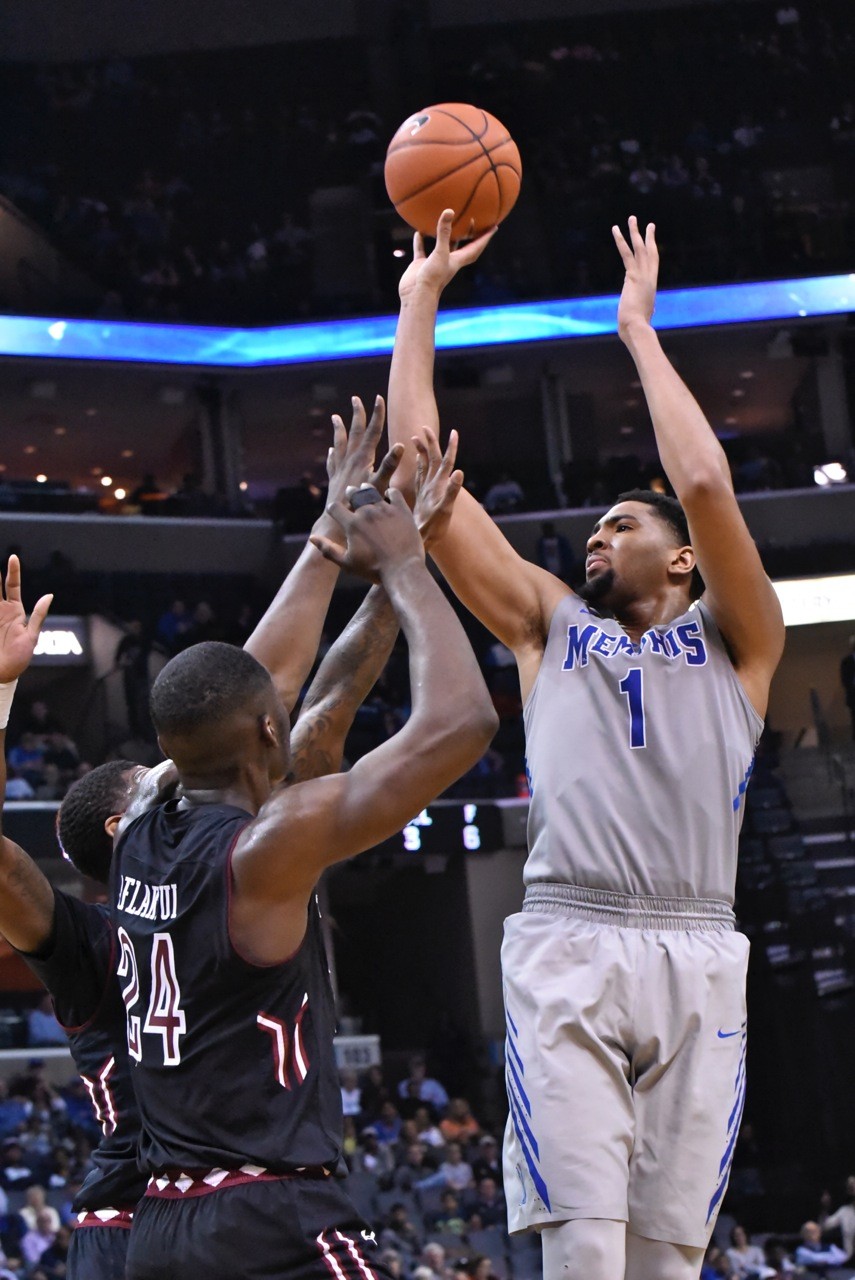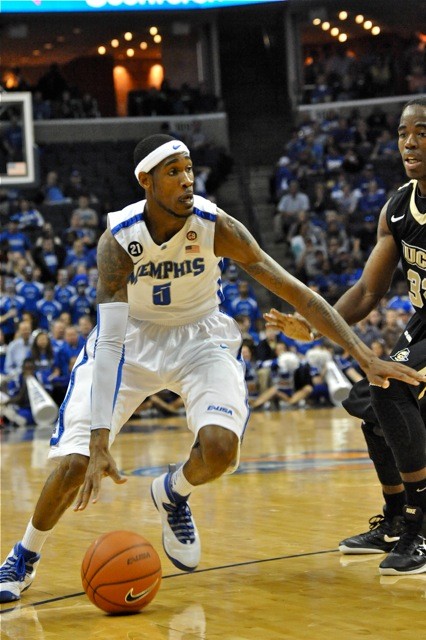This Saturday at FedExForum, the late Lorenzen Wright will become the 10th former Memphis Tiger to have his uniform number retired. At halftime of the Tigers’ game against Tulane, Wright’s 55 will rise to the arena’s rafters, where it will hang above the court for every Tiger home game to come. There it will join banners honoring nine other legends who proudly wore blue and gray for Memphis: Forest Arnold, Win Wilfong, Larry Finch, Ronnie Robinson, Larry Kenon, John Gunn, Keith Lee, Elliot Perry, and Penny Hardaway. Wright’s ceremony will be the first to retire a Tiger’s number since March 2014, when the program honored Kenon.
Beyond the Mid-South, Lorenzen Wright is as famous for his tragic passing as for his exploits on the basketball court. In July 2010, a little over a year since he played his final NBA game, Wright was shot to death in a field in east Shelby County, the victim of a scheme orchestrated by his ex-wife, who is now serving a 30-year prison sentence. (The man who pulled the trigger is serving a life sentence.) He left behind six children and thousands upon thousands of fans from his days with the Tigers and, later, the NBA’s Memphis Grizzlies.
A graduate of Booker T. Washington High School in Memphis, Wright joined the Tiger program after a down season (13-16) in 1993-94. An immediate starter for coach Larry Finch, Wright brought a ferocity to basketball at The Pyramid unlike many Tigers before him. (Did players scream after dunks before Lorenzen Wright?) He averaged a double-double that season, pacing Memphis in both scoring (14.8 points per game) and rebounds (10.1). Best of all, he helped the Tigers reach the NCAA tournament’s Sweet 16, drubbing archrival Louisville in the first round. After another double-double campaign as a sophomore (17.4 and 10.4 rebounds), Wright entered the NBA draft and was chosen with the seventh pick by the Los Angeles Clippers.
To date, no former Tiger has played in more NBA games than Lorenzen Wright’s 778. And while Wright suited up for five teams as a pro, he played more games with the new-to-town Memphis Grizzlies (336) than any other. He remains seventh in Grizzlies history with 2,386 rebounds. Wright’s banner will be the only one that could be left up on a Grizzlies game night and still feel appropriate.
Only 34 years old at the time of his murder, Wright deserved a better fate. He was and is a beloved Memphian, still one of only two Tiger players to appear on the cover of Memphis magazine. (Keith Lee is the other. Finch and Hardaway each graced the cover, but not until they were coaching the program.) Saturday afternoon will be a special moment in the history of a proud basketball program, and even more special for those who love and remember the one and only Lorenzen Wright.
• The Tigers won’t be able to stop with 10 retired numbers. Among the players honored, none played for the program since Wright appeared in his last college game 27 years ago. Andre Turner (number 10) should join his teammate Lee in the rafters, his career assists total (763) not so much as approached since the Little General’s last game in 1986. The university must also find a way to recognize at least one player from the extraordinary four-year period from 2005-06 to 2008-09 when the Tigers reached at least the Sweet 16 every season. I’ve long advocated the retirement of number 5 for Antonio Anderson. He played for all four of those teams and is the only player in Memphis history to compile 1,000 career points, 500 rebounds, and 500 assists. Anderson also played in more games (150) than any other Tiger, a record unlikely to be matched in the near future.


 Larry Kuzniewski
Larry Kuzniewski  Larry Kuzniewski
Larry Kuzniewski